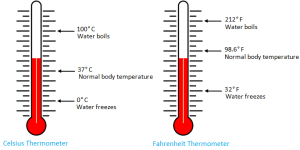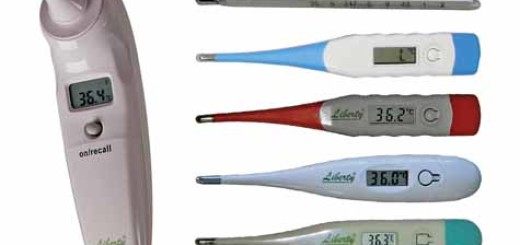Celsius thermometer and importance of mercury in making thermometers
The Celsius thermometer
The Celsius thermometer is the thermometer that is used to measure the temperature of liquids, the Swedish scientist “Andres Celsius” created the Celsius scale 1747, While recording the temperature, the thermometer must be vertical and the direction of sight must be perpendicular to the thermometer.
Andres Celsius considered the zero as the melting point of ice and 100 degree Celsius as the boiling point of water, He divided the distance between zero and 100 degree Celsius into 100 parts, where each part equals one degree.
The Celsius thermometer consists of a transparent thick glass tube, a capillary tube closed from one of its ends, and a mercury bulb that filled with mercury and connected to the other end of the capillary tube.
There is no constriction above the mercury bulb in the Celsius thermometer, the thermometer scale starts from zero degree Celsius to 100 degree Celsius, and every degree is represented by one part on this scale.
There are some types of Celsius thermometers whose scales reach 200 degree Celsius, In Celsius thermometer, the lower fixed point is 0 degree Celsius which known as the melting point of ice or the freezing point of water, and the upper fixed point is 100 degree Celsius which known as the boiling point of water.
Some thermometers contain two scales, one represents the Celsius scale (°C) and the other represents the Fahrenheit scale (°F), where:
0°C = 32°F
100°C = 212°F
Why mercury is preferred in making thermometers?
- Mercury is used in making thermometers because it is a liquid metal that can be seen easily through the thermometer glass, and it is a good conductor of heat.
- Mercury is a regular expanding material (expands regularly), that makes mercury gives an accurate estimation, and it does not stick to the walls of the capillary tube.
- It gives a wide range of temperature measurement because it remains in a liquid state between (−39°C) and (357°C).
- It returns back easily to the bulb because it doesn’t stick to the wall of the capillary tube.
Some thermometers contain two scales one represents the Celsius scale (°C) and the other represents the Fahrenheit scale (°F), where:
The importance of measuring temperature and medical thermometer
Laser thermometers uses advantages and disadvantages
Infrared thermometers (IR thermometers) features, types, cons and pros




